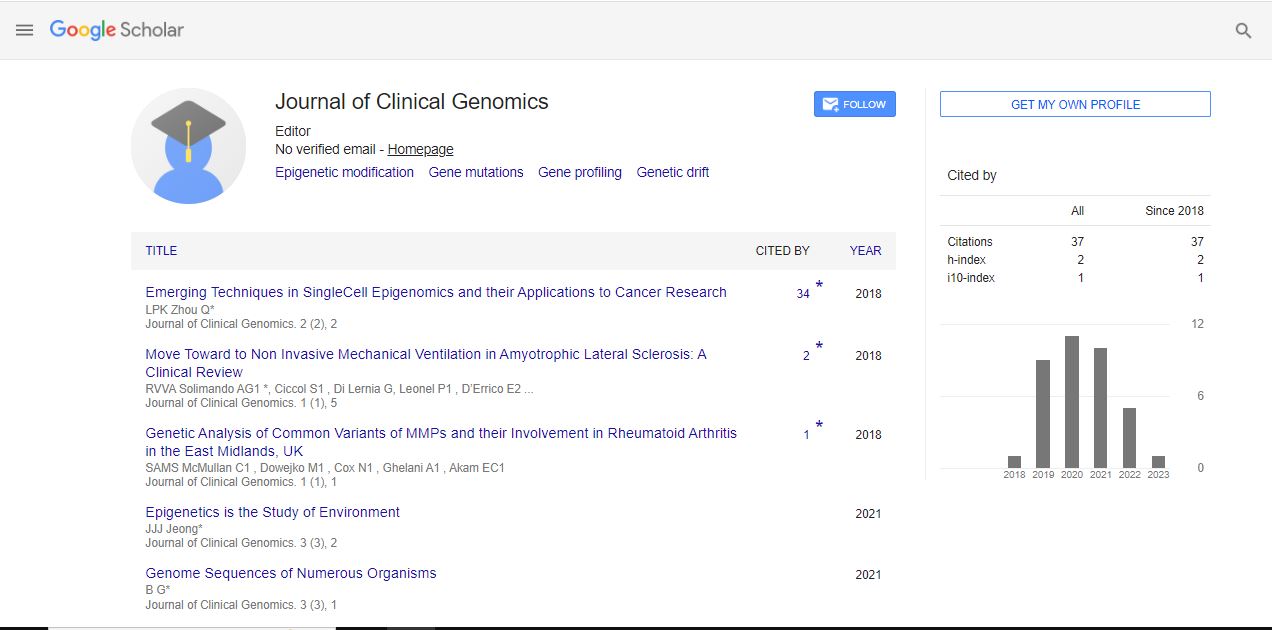Editorial, J Chromatography Res Vol: 4 Issue: 1
A Brief Notes on Thin layer Chromatography
Alajos Grün*
Department of Organic Chemistry University of Technology and Economic, Hungary,E-Mail: aljosgrujin34@ch.tc.hn
*Corresponding Author: Alajos Grün Department of Organic Chemistry University of Technology and Economic, Hungary,E-Mail: aljosgrujin34@ch.tc.hn
Received: 09 December, 2021; Accepted: 23 December, 2021; Published: 30 December, 2021
Keywords: Thin-layer chromatography (TLC), non-volatile mixtures.
Introduction
Thin-layer chromatography (TLC) is a type of chromatography used it to separate non-volatile mixtures. Thin-layer chromatography is decided to carry out on a piece of paper of inert substrate, including such glass, plastic, or aluminum foil, which has been composed of a number of absorbent, typically silica gel, aluminum oxide (alumina), as well as cellulose. The stationary phase refers to this adsorbent layer. Following the application of the sample to the plate, a solvent or solvent combination (known as the mobile phase) is drawn up a plate by capillary. Separation occurs even though different analyte ascend the TLC plate at different rates. The characteristics of the solvent system vary from that of the solid phase. Non-polar mobile phases, including such heptane, should be used with silica gel, a very polar substance. The mobile phase may be a combination, enabling chemists to fine-tune the mobile phase's bulk properties. The spots are visualised just after test. This is often accomplished merely by trying to project UV light onto the sheet; the plates are usually treated with a phosphor, and black patches seem to on the sheet in which substances soak up the light impinging on a specific area. Spots can be visualised using chemical reactions; anisaldehyde, for example, forms colored forms complexes with several compounds, and sulfuric acid chars most organic compounds, leaving a dark spot on the sheet. To accurately measure the outcomes, divide the distance covered by the material under consideration by total distance travelled by the mobile phase; this ratio is also known as the retardation factor (RF), or retention factor in colloquial parlance. To obtain a precise result, the solvent absorption must be stopped first before mobile phase comes to the end of the stationary phase. In general, a substance with a similar structure to the stationary phase will also have a low RF, whereas one with a similar structure to the solvent system will have a high retardation factor. Retardation factors are typical, but they differ based on the precise condition of the mobile and stationary phases. As a result, chemists pressurizing a sample of a known substance to the sheet alongside. Thin-layer chromatography can be used to record the progress of the reaction, recognize substances in a given medium, and assess the purity of the substance. Evaluating ceramides and essential fats, detecting pesticides or insecticides in water and food, analyzing the dye structure of fibers in forensics, assaying the radioisotopes purity of radiopharmaceuticals, as well as identifying native herbs and their components are some instances of these applications. The original system can be improved in a number of ways, including automating the multiple stages, increasing the resolution attained with TLC, and allowing for more extremely accurate analysis. This technique is known as HPTLC, or "high-performance TLC." HPTLC typically employs thinner layers of solid phase and tiny sample volumes, which reduces resolution loss due to the diffusion. TLC plates are typically available commercially, with basic particle size ranges to enhance reproducibility. They are formed by blending a sorbents, such as silica, with a tiny portion of an inert binder, including such calcium sulphate (gypsum), and moisture. This mixture is applied as a thick slurry to an unreactive carrier sheet, which is typically glass, thick aluminium foil, or plastic. The finished plate has been dried and powered up in an oven for 30 mins at 110 °C. The absorption layer thickness is generally around 0.1–0.25 mm for analysis purpose and about 0.5–2.0 mm for sample preparation TLC.
 Spanish
Spanish  Chinese
Chinese  Russian
Russian  German
German  French
French  Japanese
Japanese  Portuguese
Portuguese  Hindi
Hindi 